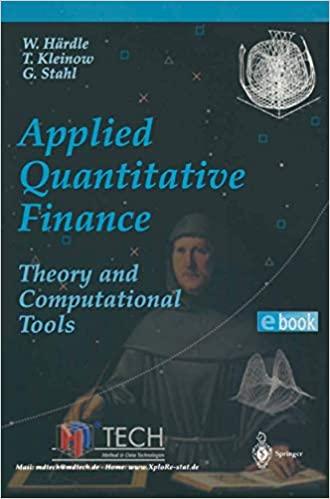Question
Mortgage markets have developed significantly since the early 1970s through the creation of secondary market instruments in the form of mortgage pass-throughs, collateralized mortgage obligations
Mortgage markets have developed significantly since the early 1970s through the creation of secondary market instruments in the form of mortgage pass-throughs, collateralized mortgage obligations (CMOs), and REMICs. These collectively have been generally referred to as mortgage backed securities (MBS). In many ways, these instruments carry the characteristics of their underlying assets -- individual mortgages.
a. Why is the cash flow of a mortgage, or a MBS, uncertain in the sense that the investor in the mortgage has granted the borrower a call option to prepay the mortgage? Compare a mortgage cash flow with a Treasury coupon bearing bond paying interest semi-annually and a payment of principal at maturity.
b. What does this call option depend upon and why?
c. The cash flow for a mortgage pass-through typically is based on some prepayment speed benchmark. Why is the assumed prepayment speed necessary to price the MBS?
d. Suppose a bank has decided to invest in a MBS and is considering the following two securities: a Freddie Mac pass-through with a WAM of 340 months and an average life of 7 years or a PAC tranche of a Freddie Mac CMO issue with an average life of 2 years. In terms of prepayment risk, contraction risk and extension risk, which MBS would probably be best for the banks asset/liability management perspective when it is known that liabilities generally have a duration less than 1 year and that assets have durations in the 2-year to 7-year range?
Step by Step Solution
There are 3 Steps involved in it
Step: 1

Get Instant Access to Expert-Tailored Solutions
See step-by-step solutions with expert insights and AI powered tools for academic success
Step: 2

Step: 3

Ace Your Homework with AI
Get the answers you need in no time with our AI-driven, step-by-step assistance
Get Started


